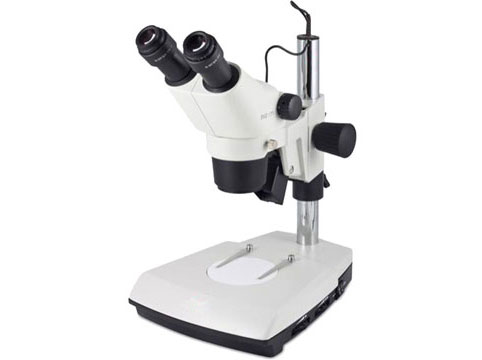Stereo microscopes, often overlooked in the realm of educational tools, are important in shaping the learning experience for students across different levels. From elementary schools to universities, these microscopic wonders offer a gateway to a deeper understanding of various subjects. In this article, we'll explore the advantages of incorporating stereo microscopes into educational settings, delve into their applications across different subjects, and discuss how to overcome potential challenges.
Advantages of Using Stereo Microscopes in Education
Enhanced Learning Experience
Stereo microscopes provide students with a three-dimensional view of microscopic specimens, allowing for a more immersive learning experience. This enhanced perspective fosters a deeper understanding of the subject matter.
Improved Visual Understanding
Unlike traditional microscopes, stereo microscopes offer a binocular vision, mimicking the natural way our eyes perceive objects. This improves visual understanding and contributes to better knowledge retention.
Hands-On Learning Opportunities
Stereo Microscopes encourage hands-on exploration, empowering students to actively engage with specimens. This tactile approach to learning not only enhances comprehension but also nurtures a genuine interest in the scientific world.
Applications in Different Educational Levels
Elementary Schools
In elementary schools, stereo microscopes can be used to introduce young minds to the wonders of the microscopic world. Simple, user-friendly models can captivate students' interest and lay the foundation for future scientific exploration.
High Schools
High schools can benefit from stereo microscopes in biology and chemistry classes, providing students with a closer look at cells, tissues, and chemical reactions. This practical exposure complements theoretical knowledge and sparks curiosity.
Colleges and Universities
In higher education, stereo microscopes become indispensable tools for in-depth research and analysis. From anatomy studies to material science experiments, these microscopes contribute to advanced learning and breakthrough discoveries.
How to Choose the Right Stereo Microscope for Educational Use
Magnification and Zoom Options
Selecting a microscope with appropriate magnification levels is crucial. Consider the range of specimens students will study and opt for a microscope with adjustable zoom options for versatility.
Lighting Features
Good illumination is key to clear observation. Choose a stereo microscope with adjustable lighting settings to ensure optimal visibility, especially when studying translucent or opaque specimens.
Durability and Portability
In educational settings, equipment durability is paramount. Choose microscopes built with sturdy materials, and consider portability for easy movement between classrooms or laboratories.
Incorporating Stereo Microscopes into Various Subjects
Biology and Life Sciences
In biology classes, stereo microscopes open a new dimension for studying specimens such as insects, plants, and microorganisms. Students can observe intricate details, fostering a greater appreciation for the diversity of life.
Chemistry and Material Sciences
In chemistry, stereo microscopes aid in the examination of chemical structures and reactions at a microscopic level. In material sciences, they contribute to the analysis of materials' physical properties.
Geology and Earth Sciences
In geology, stereo microscopes are invaluable for studying rocks, minerals, and fossils. They enable geologists to explore the Earth's history through detailed examination of geological samples.
